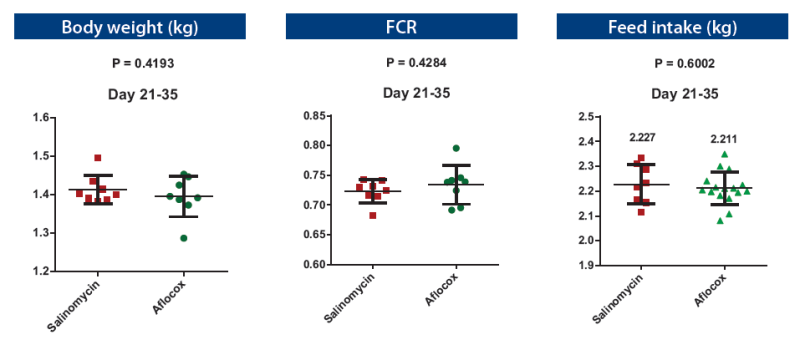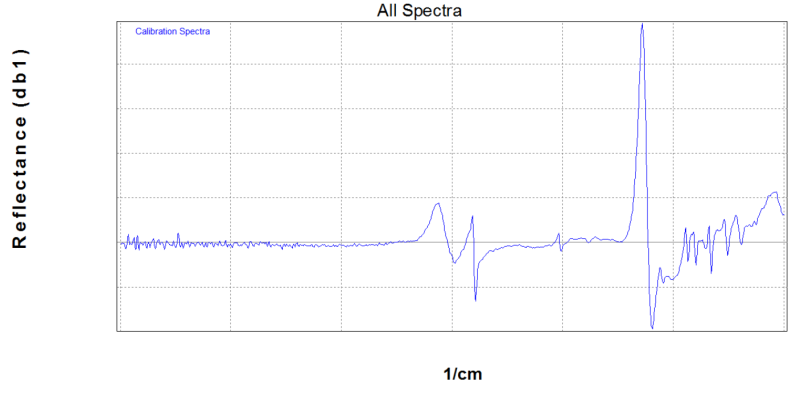Enhanced TDS
Knowde-enriched technical product data sheet
Identification & Functionality
- Animal Feed & Nutrition Functions
- Technologies
- Product Families
- Components
Mixture of dried herbs and plants, pigment and anticaking agent.
Features & Benefits
- Animal Feed & Nutrition Features
- Product Background
A novel alternative approach to control coccidiosis which contains triterpenoid saponins that bind to the cholesterol of the protozoan cell membrane. Several bio-active immunomodulatory compounds reinforce the bird’s immunity during coccidiosis infection. The antioxidant bio-actives can alleviate the excess of the oxidative stress during infection. The plant bio-actives have been selected for their ability to reduce the acute inflammation encountered during coccidiosis.
- Product Benefits
- Anti-parasitic effect - Feed Ingredient Anticoccidial interferes with the Eimeria cell wall synthesis Feed Ingredient Anticoccidial contains triterpenoid saponins that bind to the cholesterol of the protozoan cell membrane. This leads to incomplete oocyst wall synthesis and eventually to partial cell lysis and cell death.
- Enhancing immunity - Feed Ingredient Anticoccidial contains several bio-active immunomodulatory compounds (Saponins, Terpenoids) that reinforce the bird’s immunity during coccidial infection.
- Reducing oxidative stress - Phenolics, Flavonoids, Carotenoids. Reactive oxidative species are produced by the host’s cellular immune response during the invasion by Eimeria species. Although this plays a role in defending against parasitic infections, when concentrations exceed a certain level, they cause tissue damage and cytotoxicity. The antioxidant bio-actives within Feed Ingredient Anticoccidial can alleviate excessive oxidative stress.
- Ameliorating inflammatory challenge - Saponins, Alkaloids. Upon invasion of Eimeria, a strong inflammatory response is induced which results in the destruction of the intestinal villi, diarrhea, hemorrhage cases, and, death in severe cases. The plant bio-actives within Feed Ingredient Anticoccidial reduce the acute inflammatory response during coccidial infection.
- Key Benefits
- Prevents anticoccidial resistance
- No withdrawal period
- Better economics
- Prevent feed cross contamination
- No resistance build-up
- Stable to pelleting
Applications & Uses
- Markets
- Applications
- Animal Species
- Use Level
- 500 g/T (Poultry)
- Product Applications
Helps to improve coccidiosis control, intestinal health and performance of broilers and turkeys reared:
- in an antibiotic-free environment
- in conventional systems facing growing resistance to existing inonophores or synthetic treatments
- fully compatible with coccidial vaccine programs
Properties
Technical Details & Test Data
- Aflocox® vs Ionophore
D21 - D35 Control Trial Salinomycin Aflocox® (0.5 kg/T) 
- Average NIR Spectrum

- Aflocox® in Challenging Feed vs Non-challenging Feed
Aflocox® in challenging feed vs regular anticoccidial program in non-challenging feed
Feed Group Treatment Mash wheat-rye based diet + 5% rye
• No coccidiostat
• No NSP enzymes
• No antibioticsPositive control No treatment Aflacox® Aflacox® 0.5 kg/T Aflacox® Plus Aflacox® Plus 1 kg/T Corn – Soy diet
• No antibioticsNegative control D0 – D21: Monensin + Nicarbazin
D22 – D35: SalinomycinCoccidia lesion score: Eimeria acervulina, maxima, tenella

Packaging & Availability
- Packaging Type
- Packaging Information
- Standard 25 kg export worthy bags on wooden fumigated pallets.
- Other net weights (1 kg*, 5 kg*, 10 kg, 20 kg, 750-1000 kg, bulk) on demand.
*Marked unit packs are packed in an outer carton up to max. 25 kg.
Storage & Handling
- Shelf Life
- 2 Years
- Storage Conditions
2 years when stored in a cool and dry environment out of direct sunlight in unopened packing.